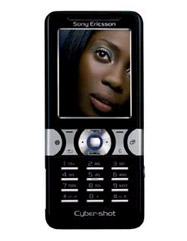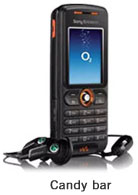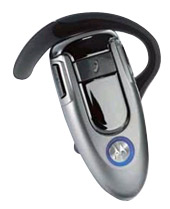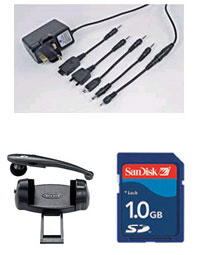With mobile phone bills making up a big part of many people’s monthly expenditure, it’s important to make sure you’re on the right deal – and don’t get stung down the line.
So what questions should you ask yourself before you opt for a new deal?
1. Research
Before you start looking for a new deal, consider your current mobile phone usage. Whether you’re on pay-as-you-go, a contract or a SIM-only deal, ask your current network provider how many minutes you use and how many texts you send on average each month.
If you tend to exceed your free minutes, then you need to consider a deal that offers you a higher monthly allowance. However, depending on the cost of calls and texts, and by how much you exceed your limit, opting for a more generous inclusive deal might not actually work out cheaper. Be prepared to do your sums.
If you consistently under use your free minutes, then you might save money by opting for a pay-as-you-go deal. Again, you’ll need to work out how much you’re likely to spend each month on calls and texts if you weren’t on an inclusive deal – different networks will list their call and text price lists online, so use these to compare the cost with your monthly contract bill.
2. Network coverage
Do you have coverage problems and any network preference? If you are considering moving to a different network provider, then it’s worth checking what the coverage is like in your area. Ask other people what networks they use and find out if they’ve suffered any issues with coverage.
Mobile phone providers tend to offer tools on their websites to allow you to find out what the coverage is like in your chosen UK postcode.
Mobilephonecoverage.me.uk, meanwhile, allows you to check mobile phone coverage by providing links to the relevant pages of different providers.
3. 3G coverage
People are increasingly opting for mobile phone with 3G – or third generation – services. These allow you to connect to the web via a mobile network or by using a dongle in your laptop. Over two million new connections to the 3G network were made between February 2008 and February 2009 alone, according to Ofcom.
It provides 3G coverage maps on its website, which show the coverage of all UK networks.
4. Handsets
The latest handset tend to be offered on more expensive monthly contracts. McHugh recommends that people consider the type/model of handset they need, including the features they are actually going to use.
Committing to a 12 or 24-month contract only to find the handset is hard to use or has irritating peculiarities is a costly mistake.Make a shortlist of the handsets you would like and research reviews – you can find plenty online in forums and on specialist mobile phone review sites, as well as in magazines.
5. Operating platforms
In addition to handsets, you can now choose from a number of operating platforms that your mobile will operate on. This is the interface of the phone and offers various features that can also be synched with your desktop - calendars, diaries and applications, for example.
McHugh says platforms - such as Google's Android, Apple's operating system, Symbian, Windows, Blackberry, Maemo - all offer a “unique operating system” with different features and benefits, so it’s worth researching what you feel will be best for you in terms of features and usability.
6. Shops versus the internet
High street mobile phone shops are a good place to find out more about different tariffs and handsets, but don’t discount the internet as a place to shop.
You can look at deals on individual providers’ websites, and also use price comparison websites such as rightmobilephone.co.uk, omio.com and moneysupermarket.com.
7. Freebies
Many providers will offer free gifts in order to tempt you to sign up – but it’s important to look beyond the freebies to see if the deal really is right for you.
“Tariffs that come with a free item, such as a games console, often come with a low text and minute allowance, as the retailer has to make up the money for the gift somehow,” says McHugh.
Check the tariff carefully before committing, just to ensure it will be suitable for the length of the contract.
8. Contract commitment
Opting for a long contract term could see you offered a cheaper monthly rate, but this could be a false economy. For a start, your circumstances might change over the period, or you might simply change your mind.
New handsets and contract offers come out all the time, so making a long-term commitment to a contract could see you lose out down the line.
If you do opt for a contract deal, then consider the cost of each contract over the term – this might be 12, 18 or even 24 months. So, rather than working out monthly payments, do your sums to find out your total financial commitment for the duration of the contract.
9. Alternatives to contracts
While contracts are great for free call and text bundles, if you don’t use your mobile regularly then you may be better off opting for pay-as-you-go instead. Just make sure you keep track of what you are spending on calls and texts; it’s easy to fall into the habit of constantly topping up your phone without realising how much you are spending.
If you would prefer a contract deal with free bundles, but are happy with the phone you already have, then why not consider a SIM-only deal? These monthly contracts tend to be cheaper and are offered by all the major networks.
The benefit of a SIM-only deal is that you aren’t tied into a long-term contract, and can normally cancel by giving just 30 days' notice. And with a range of packages available, you could also save money on your monthly bill.
10. Small print
Check the small print and don't be afraid to ask questions or for clarification before you sign up for a contract, SIM-only deal or handset. Also ask about the returns or fault policy, and whether you can cancel your contract penalty-free down the line.
Thanks: moneywise & google pics
Click here to know how-to-find-cheap-car-insurance-must



 Many people take snapshots with their mobile phone, so it's no surprise they want a great built-in digital camera. Today's mobile phones – with digital cameras of up to 8 megapixels – take great snapshots, and many can shoot short video clips, too.
Many people take snapshots with their mobile phone, so it's no surprise they want a great built-in digital camera. Today's mobile phones – with digital cameras of up to 8 megapixels – take great snapshots, and many can shoot short video clips, too. The smaller the mobile phone, the handier it is to carry around.There are three main styles: candybar (the standard bar-shaped traditional phone), clamshell (with a flip cover) and the slider (where the keypad slides out from under the screen).
The smaller the mobile phone, the handier it is to carry around.There are three main styles: candybar (the standard bar-shaped traditional phone), clamshell (with a flip cover) and the slider (where the keypad slides out from under the screen). 
 You’ll also see variants of clamshells like ‘twist’ phones, where the screen can turn around 180 degrees to keep everything on display without having to open it up.
You’ll also see variants of clamshells like ‘twist’ phones, where the screen can turn around 180 degrees to keep everything on display without having to open it up. Today's mobile phones have excellent clear, full-colour screens. The main factor determining screen size is how you'll use your phone. Do you mostly make calls, and just need clear digits and contact names on the screen? If so, go for a smaller screen, since it should increase battery life and 'talk time'.
Today's mobile phones have excellent clear, full-colour screens. The main factor determining screen size is how you'll use your phone. Do you mostly make calls, and just need clear digits and contact names on the screen? If so, go for a smaller screen, since it should increase battery life and 'talk time'. All phones connect to the UK's GSM network as standard. Many also connect to the GPRS data network for light email and data, and increasingly phones are able to use 3G – a high-speed data network. So if you'd like to use your phone as a pocket-sized Internet and email device, look for 3G.
All phones connect to the UK's GSM network as standard. Many also connect to the GPRS data network for light email and data, and increasingly phones are able to use 3G – a high-speed data network. So if you'd like to use your phone as a pocket-sized Internet and email device, look for 3G. It's a good idea to buy a spare charger, so you can keep one at work or in the car as well as at home without carrying it around all the time.
It's a good idea to buy a spare charger, so you can keep one at work or in the car as well as at home without carrying it around all the time. The widest, most powerful comparison is offered by uSwitch*, and it only takes a couple of minutes. Enter basic home and boiler details and it will return quotes based on the age and model of your boiler, excluding policies that won't cover you.
The widest, most powerful comparison is offered by uSwitch*, and it only takes a couple of minutes. Enter basic home and boiler details and it will return quotes based on the age and model of your boiler, excluding policies that won't cover you.  Energyhelpline* is a less functional search and includes fewer providers. But it's still worth checking as it covers different firms to uSwitch.
Energyhelpline* is a less functional search and includes fewer providers. But it's still worth checking as it covers different firms to uSwitch. 

 Npower's Hometeam* Boiler Care Flexi costs £9.95/mth for the first year (usually £11.50 p/mth). It includes an annual boiler service & safety check, unlimited call-outs and repairs (£50 excess/call which is relatively standard). This is open to anyone, including non-Npower customers.
Npower's Hometeam* Boiler Care Flexi costs £9.95/mth for the first year (usually £11.50 p/mth). It includes an annual boiler service & safety check, unlimited call-outs and repairs (£50 excess/call which is relatively standard). This is open to anyone, including non-Npower customers.  Eon's Central Heating Care comes in a number of shapes and sizes. Again, you don't need to be a customer to get this cover.
Eon's Central Heating Care comes in a number of shapes and sizes. Again, you don't need to be a customer to get this cover. This Green Insurance* policy offers the cheapest premium at £8.33 p/mth (£99.96 annually). It offers a mixture of boiler and emergency care cover.
This Green Insurance* policy offers the cheapest premium at £8.33 p/mth (£99.96 annually). It offers a mixture of boiler and emergency care cover. Direct Line offers 15% off its Home Response 24 policy online. It's not included in any comparison sites, so you must go direct to check its prices.
Direct Line offers 15% off its Home Response 24 policy online. It's not included in any comparison sites, so you must go direct to check its prices.  Swinton* offers two options: a £4.99/month Home Emergency policy and a £6.99/mth option which adds cover for glass, locks and roof damage. Both currently offer three months' free cover.
Swinton* offers two options: a £4.99/month Home Emergency policy and a £6.99/mth option which adds cover for glass, locks and roof damage. Both currently offer three months' free cover.









